#Governorate of New Castile
Explore tagged Tumblr posts
Photo

La fundación de Lima
by José Effio (Peruvian, 1845-1920) 1897
Museo de Arqueología, Antropología e Historia del Perú
#José Effio#Pizarro family#Francisco Pizarro#Ciudad de los Reyes#Monarquía Hispánica#Crown of Castile#Governorate of New Castile#19th century#1897#Academicism#Lima#Peru#MNAAHP#January 18th#1535#paintings
6 notes
·
View notes
Text
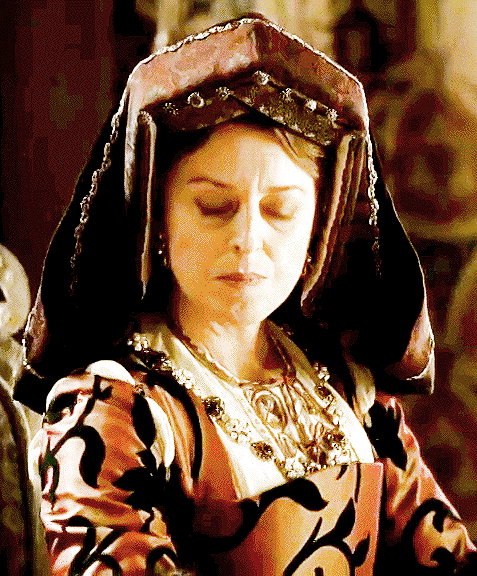
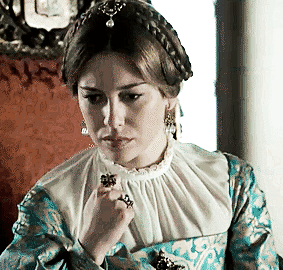
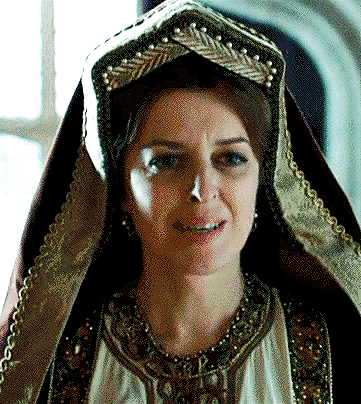
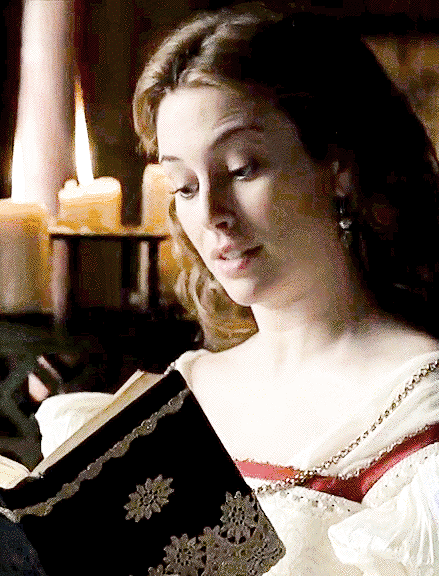
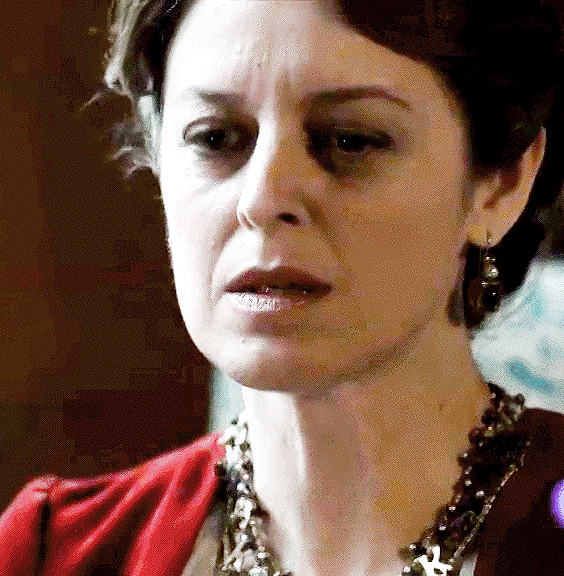
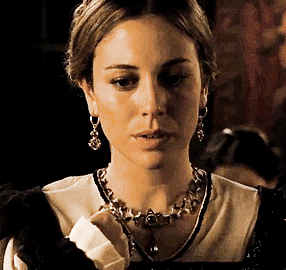
Katherine of Aragon & Isabel of Portugal
Holy Roman Empress Isabel of Portugal was interested in the case of the repudiation of her aunt the Queen of England, and she was an advocate of her cause. Katherine of Aragon knew that her nephew, Carlos V, was her only chance to defend her case successfully and that is why she wrote him. Since the death of King Fernando II of Aragon in 1516, her nephew had been her paterfamilias, the head of the Spanish Monarchy, and the most powerful monarch in Europe. Katherine played an active role as ambassadress in the Tudor court, and she was one of his biggest European supporters. Seven months after Katherine’s plead, Carlos sent a letter to his wife Isabel in Spain who was acting as his Governor during his absence. He entrusted her with a mission, to find evidence and witnesses that could help their aunt in her cause to defend her marriage.
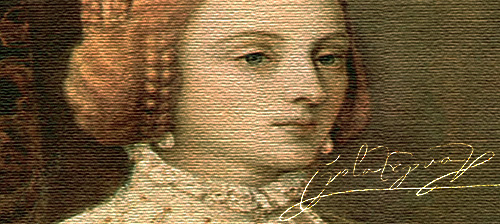
The Empress rejoiced that her husband Carlos V was so determined to defend the right of Queen Katherine, which, indeed, it were his duty to do; not only because she was his aunt but also because the case closely concerns the Christian religion itself. Isabel sent several orders to different parts of the Iberian Peninsula to gather evidence. The first was directed to the officers in the Chancillería in Aragon to look for any legal documents related to the marriage negotiations. Another order was sent to elaborate a list of people who were still alive and who had been witnesses in the negotiations concerning Katherine’s marriages. A second group of people were those who had accompanied Katherine to England in 1501. The third order included a questionnaire for these people that directly addressed Katherine’s virginity.
Katherine herself had written to her a full account of the case, of which copies were made to be sent to the Universities of Castile, Aragon, Valencia and Catalonia, with the orders of the Empress that the Universities are to study the case very carefully and send their opinions to her. Originals of the same shall be sent to the Emperor, and copies to Micer Mai in Rome.
In May 1531 a letter was rediscovered in Spain, written by Katherine’s father Fernando to his ambassador in Rome, Francisco de Rojas, which appeared to change everything. Katherine must have been excited to hear that it confirmed that Arthur had not consummated the marriage but that Rojas was to apply for a dispensation anyway in order to satisfy the English.
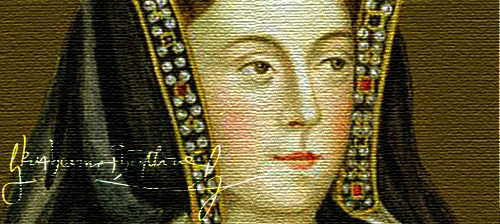
Empress Isabel was in contact with her ambassadors in Rome, France and London. Dr Pedro Ortiz, an expert in law and Lecturer at the University of Salamanca designated to defend Katherine’s case in the papal court, wrote to the Empress urging her to collect Katherine's letters as the future relics of a holy martyr. In another letter, Ortiz implored the Empress to pray for Katherine and Mary. He believed that they are in great danger.
The death of Katherine of Aragon on 7 January 1536 at Kimbolton Castle, was really sad for the Spanish Royal family. Carlos V was in Naples. By February 1, the Emperor wrote to his wife, who was acting as his regent in Spain, saying that he had heard of Katherine’s death “five or six days” previously. He told her that he and his court had donned mourning and that suitable obsequies had been performed.
Five or six days ago the news of the demise of her most Serene Highness the queen of England arrived, which I felt deeply, as you may imagine. May God receive her in Paradise, which she certainty deserved on account of her extreme goodness and virtue, and the excellent life she led. About her last illness and death the accounts differ. Some say that it was produced by a painful affection of the stomach, which lasted upwards of 10 or 12 days; others that the distemper broke out all of a sudden after taking some draft, and there is a suspicion that there was in it that which in similar cases is administered. I do not choose to make such an affirmation, nor do I wish to have it repeated as coming from me, but nothing can prevent people from judging and commenting upon the event according to their own feelings. Of the Princess, my cousin, I hear only that she is inconsolable at the loss she has sustained, especially when she thinks of her father’s past behaviour towards herself, and of the little favor she can expect for the future. I trust, however, that God will have pity on her, and will not permit the great injustice which has been shewn her to remain with- out some reparation. I have put on mourning, and ordered all the grandees around me, the high officers of this household, as well as the gentlemen of my chamber and table, to do the same, and I myself intend wearing it until I go to Rome. The exequies have been performed here as is customary in such cases; there, where you are, the same ought to be done, as this is but fitting.
Isabel felt Katherine’s death and she was surprised “by what is said of her death”, the rumors about a possible poisoning of her aunt. The Empress also received a letter from Dr Ortiz, enclosing a copy of one from ‘that glorious martyr’ Katherine herself ‘by which the Empress will see the perfection and heroic virtues to which she attained’. Katherine would be a ‘true patroness and advocate of the Empress in Heaven’.
Sources:
Amy Licence, Catherine of Aragon: An Intimate Life of Henry VIII's True Wife
Emma Luisa Cahill Marrón, Article: “Royal Sexualized Bodies at the Tudor Court” : Questioning an Honest Queen: The Scrutiny Around Queen Catherine of Aragon's Virginity
Julia Fox, Sister Queens: The Noble and Tragic Lives of Katherine of Aragon and Juana, Queen of Castile
#catherine of aragon#katherine of aragon#catalina de aragon#isabella of portugal#isabel de portugal#english history#spanish history#women in history
34 notes
·
View notes
Text

Mary (1505–1558), Queen of Hungary
Artist: Copy after Jan Cornelisz Vermeyen (Dutch, c. 1504–1559)
Date: 1500's
Medium: Oil on wood
Collection: Metropolitan Museum of Art, New York City, NY, United States
Mary of Hungary (Governor of The Netherlands)
Mary of Austria (15 September 1505 – 18 October 1558), also known as Mary of Hungary, was Queen of Hungary and Bohemia as the wife of King Louis II, and was later governor of the Habsburg Netherlands.
The daughter of Queen Joanna and King Philip I of Castile, Mary married King Louis II of Hungary and Bohemia in 1515. Their marriage was happy but short and childless. Upon her husband's death following the Battle of Mohács in 1526, Queen Mary governed Hungary as regent in the name of the new king, her brother, Ferdinand I.
Following the death of their aunt Margaret in 1530, Mary was asked by her eldest brother, Charles V, Holy Roman Emperor, to assume the governance of the Netherlands and guardianship over their nieces, Dorothea and Christina of Denmark. As governor of the Netherlands, Mary faced riots and a difficult relationship with the Emperor. Throughout her tenure she continuously attempted to ensure peace between the Emperor and the King of France. Although she never enjoyed governing and asked for permission to resign several times, the Queen succeeded in creating a unity between the provinces, securing for them a measure of independence from both France and the Holy Roman Empire[1] as well as in creating of a permanent navy for Netherlands alongside Maximilian of Burgundy and Cornelis de Schepper. After her final resignation, the very frail Queen moved to Castile, where she died.
#portrait#queen of hungary#mary of hungary#mary of austria#queen consort of hungary and bohemia#governor of the habsburg netherlands#jan cornelisz vermeyen#dutch painter#european art#16th century painting#oil on wood
7 notes
·
View notes
Text
The growth of Barcelona between the years 1823 and 2010.
The red is the built area, black is water (the Mediterranean sea and the Besòs river), and in different shades of gray they represent elevation (white is the flatter surface, and the darker parts are more elevated, in the Collserola and Montjuïc mountains) as well as the old city walls. GIF from Històries de Barcelona.
Barcelona had had basically the same perimeter since the 14th century until the 1850s (what you can see at the beginning of the video). How is it possible that it remained the same for so many centuries -including the beginning of the Industrial Revolution with its urban population boom!- and then suddenly exploded the way it did? As with many things in this city's history, it has to do with the Spanish army.

This is was Barcelona's surface for all those centuries (for those familiar with the city, what nowadays is Ciutat Vella). As you can see, it's inside the city walls (built in the Middle Ages, reinforced with bastions in the Early Modern period).
But in 1703-1714, we have the War of the Spanish Succession, where Castile (Spain) occupies Catalonia and the Bourbon dynasty become kings, and by right of conquest they abolish Catalonia's independence (as well as the Kingdom of València, Mallorca and Aragon, who suffer the same fate, but I will focus on Catalonia in this post because it's what explains Barcelona's weird growth). Catalonia becomes ruled by a military governor chosen by the king from Castile and a huge repression starts against Catalan people, prohibiting the use of the Catalan language in official settings, banning Catalan people from holding office (only Castilians could), forcing families to host invading soldiers in their homes, forcing every town to dedicate a percentage of their fields to feeding the Spanish army and their horses, and a very long etc.
Oh, and they forced the inhabitants of 17% of Barcelona's built surface to destroy their own homes so that Spain could built a huge military citadel to bomb the city from, right where Barcelona's most economically active and most populated neighbourhood (la Ribera) stood.
Barcelona is Catalonia's capital city, and Barcelonians have always been known for their rebellious spirit. The new Bourbon king made sure to turn Barcelona into a completely militarized city, with a strong presence of the army in every corner of the city. There are 2 military buildings right outside the city that answer our question:

On the North, the huge Citadel. On the South, the Montjuïc castle. Then, the Spanish king made the law that nothing could be built outside of the city walls. The reason? They wanted to be able to bomb any place in the city. They could reach the whole city from these two military points, and they didn't want any building outside that they couldn't easily destroy.
The Citadel was demolished in 1868 after a revolution (that's a story for another day), but the Montjuïc castle still exists, standing on top of the hill that overlooks the city:
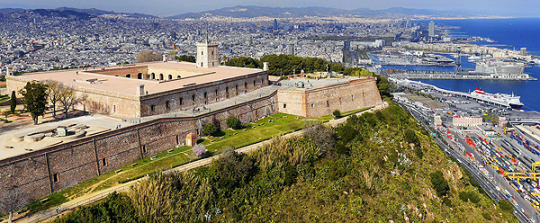

Anyway, this decision to not allow Barcelona to grow had horrible consequences for its population. In the late 1700s, Barcelona's population was quickly growing because many people from the countryside were moving in to work in its proto-industry. The city could only grow inwards: all the space was filled (say bye to the fields and vegetable gardens that used to be common in the city), the buildings built more storeys taller in cheap material to accommodate more people quickly, houses were divided to rent every floor or room separately, and housing became much more expensive and became treated like a product to make money off. Many families didn't have sunlight nor good air ventilation, with important repercussions in people's health.
The population continued growing, particularly with the Industrial Revolution, when even more people moved into the cities to work in factories. The situation was absolutely unsustainable, so it's no surprise that riots started throughout the 1800s to tear down the walls. However, every time, the Spanish government answered with a strong repression of the people who were destroying the walls and forced them to build them back.
Barcelonians finally made it in summer 1854, when the cholera epidemic worsened at the same time that the 2-year long progressive government started in Spain, which saw tearing down the walls as the only way to settle the constant social uprisings in Barcelona.
In 1859, the Eixample expansion was started to build outside the old city walls, according to the Cerdà plan (the egalitarian urbanism plan, a story for another day). Finally, the city could grow as much as it needed to make room for its inhabitants in dignified houses. And during the late 1800s and throughout the 1900s, Barcelona has been the destination of many waves of immigration, so it has continued growing. Now, it has reached all its growth: there is no space left, with the Mediterranean sea on the East, the Collserola mountains on the West, and already highly-populated cities at the North and South. Barcelona has reached its full possible expansion.
#barcelona#catalunya#història#mapes#urban#europe#history#1800s#1900s#urbanism#maps#war of the spanish succession#guerra de successió#catalonia#1714#european history#spain
40 notes
·
View notes
Text
In honor of my son, I created the Philando Castile Relief Foundation. We help families that lose loved ones to gun violence. We reduce the negative lunch balance within the school districts.
In 2017, we did a Philando Feeds the Children campaign. We were able to pay off St. Paul’s lunch debt. All our surrounding schools were having the same issue. So I figured the best way to honor his legacy was to do the things that he felt near and dear to his heart, which was helping families and children. Philando didn’t have any biological children. Those children at the school were his children.
I just was compelled and I followed that little voice. I say it’s God, other people may see it differently. But I was listening to God and the spirit of my son, and we just started helping people.
I spoke with Governor [Mark] Dayton about the lunch debt before he left office, and of course I spoke with Governor Walz about it, as well. And I was really, really happy that he created the bill. Last year, he said it didn’t go anywhere. So they revisited it this year.
[Paying for school meals] is a financial hardship for our families with the pandemic being in play, and then inflation coming along. The time is right to just do the right thing.
I know that some of the legislators made statements like our kids are not reading at the level they should. Maybe that’s due to them being hungry, you know? If our kids are fed adequately, maybe they will do better in school.
3 notes
·
View notes
Text


THE DESCRIPTION OF SAINT FRANCIS XAVIER The Patron of Foreign Missions Feast Day: December 3
"Many, many people hereabouts are not becoming Christians for one reason only: there is nobody to make them Christians."
He was born Francisco de Jasso y Azpilicueta on April 7, 1506 at Javier, Kingdom of Navarre in northern Spain to an influential noble family. He was the youngest son of Don Juan de Jasso y Atondo, Lord of Idocín, president of the Royal Council of the Kingdom of Navarre, and seneschal of the Castle of Xavier and Doña María de Azpilcueta y Aznárez, sole heiress to the Castle of Xavier. Miguel de Jasso (later Miguel de Javier), his brother, became Lord of Xavier and Idocín at the death of his parents.
In 1512, Ferdinand, King of Aragon and regent of Castile, invaded Navarre, initiating a war that lasted over 18 years. Three years later, Francis's father died when Francis was only nine years old. In 1516, Francis's brothers participated in a failed Navarrese-French attempt to expel the Spanish invaders from the kingdom. The Spanish Governor, Cardinal Cisneros, confiscated the family lands, demolished the outer wall, the gates, and two towers of the family castle, and filled in the moat. In addition, the height of the keep was reduced by half.
In 1525, Francis went to study in Paris at the Collège Sainte-Barbe, University of Paris, where he spent the next eleven years. In the early days he acquired some reputation as an athlete and a high-jumper. Four years later, Francis shared lodgings with his friend Pierre Favre. A new student, Íñigo López de Oñaz y Loyola (later Ignatius of Loyola), came to room with them. At 38, Ignatius was much older than Pierre and Francis, who were both 23 at the time. Ignatius convinced Pierre to become a priest, but was unable to convince Francis, who had aspirations of worldly advancement. At first, Francis regarded the new lodger as a joke and was sarcastic about his efforts to convert students. When Pierre left their lodgings to visit his family and Ignatius was alone with Francis, he was able to slowly break down Francis's resistance. In 1530, Francis received the degree of Master of Arts, and afterwards taught Aristotelian philosophy at Beauvais College, University of Paris.
Francis began his study of theology in 1534 and was ordained on June 24, 1537. In 1539, after long discussions, Ignatius drew up a formula for a new religious order, the Society of Jesus. Ignatius's plan for the order was approved by Pope Paul III in 1540.
Francis was sent as a missionary to India. After a voyage of 13 months, he began preaching in the Portuguese colony of Goa (a state on the southwestern coast of India within the Konkan region), defending the natives from injustices and abuses. He was particularly outraged that some masters counted the blows inflicted on the slaves on the beads of their rosaries. Five months later, he preached with such enthusiasm among the Paravas on the Pearl Fishery Coast that most of them asked to be baptized. He also knew how to accept defeat, as when he preached for 12 months among the Brahmans obtaining only one conversion.
In Malacca in December 1547, Francis Xavier met a Japanese man named Anjirō (or Yajirō). had heard of Francis in 1545 and had travelled from Kagoshima to Malacca to meet him. Having been charged with murder, Anjirō had fled Japan. He told Francis extensively about his former life, and the customs and culture of his homeland. Anjirō became the first Japanese Christian and adopted the name 'Paulo de Santa Fé'. He later helped Xavier as a mediator and interpreter for the mission to Japan that now seemed much more possible. Francis returned to Goa to attend to his responsibilities as superior of the mission there in January 1548. The next 15 months were occupied with various journeys and administrative measures. He left Goa on April 15, 1549, stopped at Malacca, and visited Canton. He was accompanied by Anjiro, two other Japanese men, Father Cosme de Torrès and Brother Juan Fernández. He had taken with him presents for the 'King of Japan (the Emperor)' since he was intending to introduce himself as the Apostolic Nuncio.
With Anjirō and three other Jesuits, Xavier reached Japan on July 27, 1549, but he was not permitted to enter any port his ship arrived at until August 15th, when he went ashore at Kagoshima, the principal port of Satsuma Province on the island of Kyūshū. As a representative of the Portuguese king, he was received in a friendly manner. Takahisa Shimazu, the fifttenth head of the Shimazu clan, the son of Tadayoshi and daimyo (feudal lord) of Satsuma, gave a friendly reception to Francis on September 29, 1549, but in the following year he forbade the conversion of his subjects to Christianity under penalty of death; Christians in Kagoshima could not be given any catechism in the following years. Francis was the first Jesuit to go to Japan as a missionary.
He brought with him paintings of the Madonna and the Madonna and Child. These paintings were used to help teach the Japanese about Christianity. There was a huge language barrier as Japanese was unlike other languages the missionaries had previously encountered. For a long time, Francis struggled to learn the language. He was hosted by Anjirō's family until October 1550. He resided in Yamaguchi from October tom December 1550. Shortly before Christmas, he left for Kyoto but failed to meet with the Emperor. He returned to Yamaguchi in March 1551, where the daimyo of the province gave him permission to preach.
Having presented some gifts to them, a music box, a clock and a pair of spectacles. He was allowed to evangelize the people. It was Francis' opinion: 'That among all unbelievers, no finer people will be found than the Japanese.'
During his trip from Japan back to India, a tempest forced him to stop on an island near Guangzhou, Guangdong, China, where he met Diogo Pereira, a rich merchant and an old friend from Cochin. Pereira showed him a letter from Portuguese prisoners in Guangzhou, asking for a Portuguese ambassador to speak to the Chinese Emperor on their behalf. Later during the voyage, he stopped at Malacca on December 27, 1551, and was back in Goa by January 1552. He set sail with Diogo Pereira on the Santa Cruz for China. He planned to introduce himself as Apostolic Nuncio and Pereira as the ambassador of the King of Portugal. But then he realized that he had forgotten his testimonial letters as an Apostolic Nuncio. Back in Malacca, he was confronted by the captain Álvaro de Ataíde da Gama who now had total control over the harbour. The captain refused to recognize his title of Nuncio, asked Pereira to resign from his title of ambassador, named a new crew for the ship, and demanded the gifts for the Chinese Emperor be left in Malacca.
In late August 1552, the Santa Cruz reached the Chinese island of Shangchuan, 14 km away from the southern coast of mainland China, near Taishan, Guangdong, 200 km south-west of what later became Hong Kong. At this time, he was accompanied only by a Jesuit student, Álvaro Ferreira, a Chinese man called António, and a Malabar servant called Christopher. Around mid-November, he sent a letter saying that a man had agreed to take him to the mainland in exchange for a large sum of money. Having sent back Álvaro Ferreira, he remained alone with António. He died from a fever at Shangchuan, Taishan, China, on December 3, 1552, while he was waiting for a boat that would take him to mainland China. He was 46 years old when he died.
Beatified by Pope Paul V on October 25, 1619 and canonized a saint by Pope Gregory XV on March 12, 1622, his body is now in the Basilica of Bom Jesus in Goa, where it was placed in a glass container encased in a silver casket. This casket, constructed by Goan silversmiths between 1636 and 1637, was an exemplary blend of Italian and Indian aesthetic sensibilities.
In 1624, he was made co-patron of Navarre, and he is considered to be one of the greatest missionaries since St. Paul the Apostle. In 1927, Pope Pius XI published the decree 'Apostolicorum in Missionibus' naming Francis Xavier, along with Thérèse of Lisieux, co-patron of all foreign missions.
#random stuff#catholic#catholic saints#jesuits#society of jesus#francis xavier#francisco javier#foreign missions
4 notes
·
View notes
Text
Events 8.5 (before 1860)
AD 25 – Guangwu claims the throne as Emperor of China, restoring the Han dynasty after the collapse of the short-lived Xin dynasty. 70 – Fires resulting from the destruction of the Second Temple in Jerusalem are extinguished. 642 – Battle of Maserfield: Penda of Mercia defeats and kills Oswald of Northumbria. 910 – The last major Danish army to raid England for nearly a century is defeated at the Battle of Tettenhall by the allied forces of Mercia and Wessex, led by King Edward the Elder and Æthelred, Lord of the Mercians. 939 – The Battle of Alhandic is fought between Ramiro II of León and Abd-ar-Rahman III at Zamora in the context of the Spanish Reconquista. The battle resulted in a victory for the Emirate of Córdoba. 1068 – Byzantine–Norman wars: Italo-Normans begin a nearly-three-year siege of Bari. 1100 – Henry I is crowned King of England in Westminster Abbey. 1278 – Spanish Reconquista: the forces of the Kingdom of Castile initiate the ultimately futile Siege of Algeciras against the Emirate of Granada. 1305 – First Scottish War of Independence: Sir John Stewart of Menteith, the pro-English Sheriff of Dumbarton, successfully manages to capture Sir William Wallace of Scotland, leading to Wallace's subsequent execution by hanging, evisceration, drawing and quartering, and beheading 18 days later. 1388 – The Battle of Otterburn, a border skirmish between the Scottish and the English in Northern England, is fought near Otterburn. 1460 – The Kingdom of Scotland captures Roxburgh, one of the last English strongholds in Scotland, following a siege. 1506 – The Grand Duchy of Lithuania defeats the Crimean Khanate in the Battle of Kletsk. 1583 – Sir Humphrey Gilbert establishes the first English colony in North America, at what is now St. John's, Newfoundland and Labrador. 1600 – The Gowrie Conspiracy against King James VI of Scotland (later to become King James I of England) takes place. 1620 – The Mayflower departs from Southampton, England, carrying would-be settlers, on its first attempt to reach North America; it is forced to dock in Dartmouth when its companion ship, the Speedwell, springs a leak. 1689 – Beaver Wars: Fifteen hundred Iroquois attack Lachine in New France. 1716 – Austro-Turkish War (1716–1718): One-fifth of a Turkish army and the Grand Vizier are killed in the Battle of Petrovaradin. 1735 – Freedom of the press: New York Weekly Journal writer John Peter Zenger is acquitted of seditious libel against the royal governor of New York, on the basis that what he had published was true. 1772 – First Partition of Poland: The representatives of Austria, Prussia, and Russia sign three bilateral conventions condemning the ‘anarchy’ of the Polish-Lithuanian Commonwealth and imputing to the three powers ‘ancient and legitimate rights’ to the territories of the Commonwealth. The conventions allow each of the three great powers to annex a part of the Commonwealth, which they proceed to do over the course of the following two months. 1763 – Pontiac's War: Battle of Bushy Run: British forces led by Henry Bouquet defeat Chief Pontiac's Indians at Bushy Run. 1781 – The Battle of Dogger Bank takes place. 1796 – The Battle of Castiglione in Napoleon's first Italian campaigns of the French Revolutionary Wars. 1816 – The British Admiralty dismisses Francis Ronalds's new invention of the first working electric telegraph as "wholly unnecessary", preferring to continue using the semaphore. 1824 – Greek War of Independence: Konstantinos Kanaris leads a Greek fleet to victory against Ottoman and Egyptian naval forces in the Battle of Samos. 1858 – Cyrus West Field and others complete the first transatlantic telegraph cable after several unsuccessful attempts. It will operate for less than a month.
0 notes
Text
FRANCISCO PIZARRO
FRANCISCO PIZARRO
1478-1541
Governor of New Castile
Francisco Pizarro was a Spanish soldier, who was the son of an army officer and was abandoned by his poor parents. He had no education and couldn’t read or write.
He was working under Viasco Balboa when they became the first European men to discover the Pacific Ocean in 1511 from the Americas. After Balboa was beheaded, the men went to trade with the natives on the Pacific coast. In 1520 he undertook the expedition to Cosa Rica.
In 1522, news spread of Hernan Cortes’s slaughter by the Aztecs and their wealth of gold. In 1529, King Charles V of Spain gave permission for Francisco Pizarro to conquer the Incas. With Diego de Almagro they sailed along the South American coast, conditions were poor and many of his men died. They landed in Peru and founded the first Spanish settlement. When they reached the Inca Empire they discovered the Incas suffering from disease including measles, smallpox and typhus.
Pizarro invited Inca leader Atahualpa to visit their camp and insisted he accept Christianity, he handed him the bible and to live under the rule of the King of Spain, Atahualpa rejected both and threw the Bible to the ground and Pizarro had Atahualpa’s unarmed followers killed. They held Atahualpa for ransom and after they were given a room filled with gold. They had Atahualpa executed. Pizarro then went to Cuzco, the Inca capital to continue his conquest of Peru.
Pizarro and Almagro became rich and powerful from their conquests but it eventually caused a rift between the two men. On 26 June 1541, Pizarro was assassinated by Almagro supporters, led by Almagro’s son. They stormed Pizarros’ palace and he was stabbed numerous times, whilst he lay dying, he drew a cross on the floor with his own blood and kissed it.

#franciscopizarro
1 note
·
View note
Text
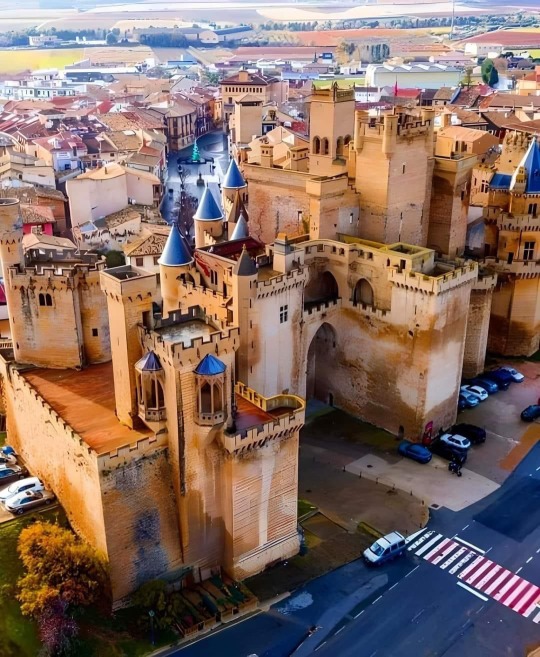
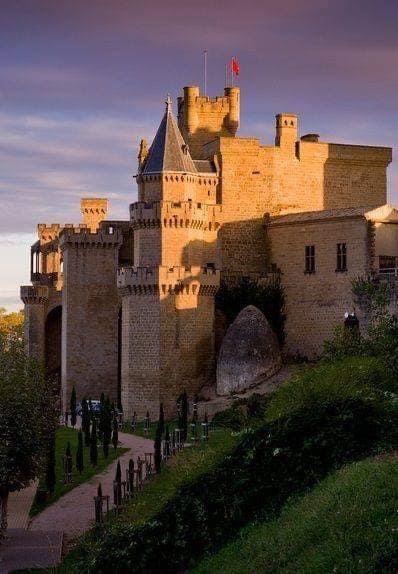

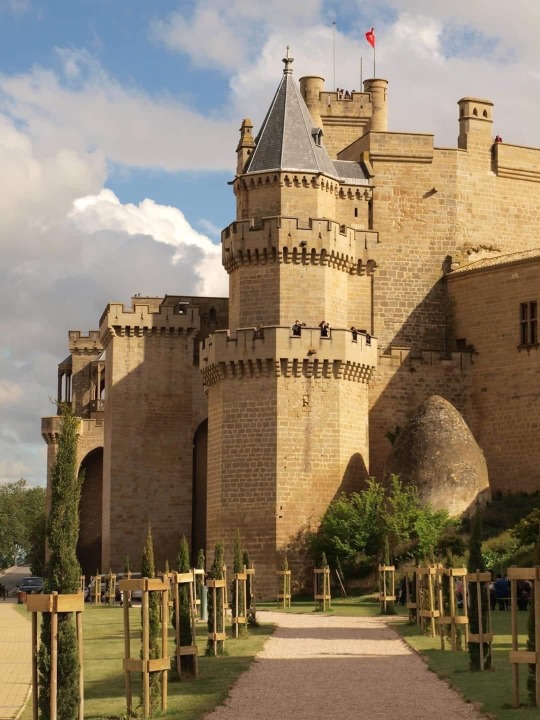

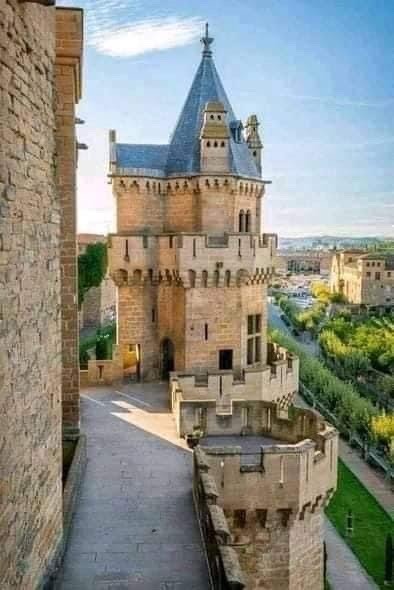




Olite Castle (Palacio Real de Olite), Navarre, Spain 🏰🇪🇸
The Royal Castle of Olite (Palacio Real de Olite) is a former castle of the kings of Navarre, situated in northern Spain.
Olite castle symbolizes the unique character of the Navarre monarchy in the late medieval period, open to Europe through its interests in France and in contact with the other kingdoms of the Iberian Peninsula.
The first castle, designated the ‘palace of the kings of Navarre’ in 13th-century documents, had been laid out at an unknown date on the site of a Roman praetorium of the 1st century AD; only its outer walls survive, with some Roman foundations, now incorporating the Parador de Turismo.
Olite castle served as a residence for the governors during the kings’ long absences in France, but with the accession of the Evreux dynasty (1328) it became a favourite royal seat, owing to its pleasant climate and position in a rich wooded valley with abundant hunting.
Queen Joanna II (1328–1349) and King Philip III of Evreux (1328–1343), followed by Charles II (1349–1387), all made some improvements to the old castle, but it was during the reign of Charles III (1387–1425) and his wife Eleanor of Castile that this nucleus was expanded, with the construction of new ranges in the space behind the 13th-century church of S María. For this work, begun in April 1399 and continuing, with some interruptions, until 1420, Charles assembled artists of widespread origins.
Many of the painters were from Catalonia, working initially under Master Enrique and then in the second decade of the 15th century under Juan de Laguardia; French artists such as Jacob le Conte and Juan du Ruisel collaborated on the decoration; glass painters came from Aragon and Flanders; and Moors from Tudela were engaged on plasterwork, carpentry and tiled decoration.
The irregular plan of Olite reflects its construction in stages, as the wishes of the patrons developed. The new ranges, with halls, bedrooms, terraces and a chapel dedicated to St George, were linked to courtyards and gardens by hanging galleries and corridors; numerous towers (the keep, the Torre del Homenaje, the Torre Nueva, the Tres Coronas and Cuatro Vientos) crowned the walls, forming an elegant silhouette against the horizon . The massive walls, with only a few slit windows, accentuated the fortified character of Olite, but this was in strong contrast to the luxurious interior.
Charles’s daughter Blanche (1425–1441), wife of the future King of Aragon, John I, continued building works at Olite, and the castle again became an official residence after Navarre lost its independence to Castile in 1515.
Subsequent documents record its gradual decline, despite continual repairs. One of the towers was burnt in 1794, and in 1813, during the Peninsular War, the castle was burnt to prevent its use by the enemy ‘and its interior ruined’.
The ruins were acquired by the provincial government in 1913, and in 1925 Olite castle was declared a national monument to save it from total destruction. Restoration work, begun in 1937, is now well advanced, but although the documents give some indication of the original state, there are difficulties in achieving it.
7 notes
·
View notes
Text
History: Córdoba's Stunning Mosque-cathedral Showcases Spain's Muslim Heritage
Christian forces captured the Umayyad capital in 1236, but left its glorious house of worship largely untouched when converting it to a cathedral.
— By Yolanda Victoria Olmedo Sánchez | 17 August 2022

The artistic styles of Islam and Christianity are visible almost everywhere in the mosque-cathedral of Córdoba—from the Renaissance cathedral in the center to the lush green orange tree courtyard. Photograph By S. Deng, Alamy, ACI
On June 30, 1236, King Ferdinand III of Castile entered the city of Córdoba, putting an end to the five-month siege that his troops had staged around the square. The Spanish Reconquista of Islamic Andalusia was advancing, and Córdoba, capital of the Umayyad caliphate in the 10th century, was the latest to fall. It had once been the brightest and most populous city in Al Andalus. It was also home to one of the world’s marvels of architecture: the Aljama Mosque.
A day before the king entered Córdoba, after the Muslims had already abandoned it, a group of Castilians left the place where they were encamped, entered the walled city through the Algeciras Gate, and went to the Great Mosque. They placed a cross and a flag of Castile atop the minaret. A few hours later, the bishop of Osma sanctified the building and celebrated a dedication mass after consecrating the altar. In a few moments, the magnificent Aljama Mosque had become a Christian cathedral.

The Córdoba mosque was expanded several times by Muslim rulers. The vast colonnaded area appears larger than it is, as the repeating patterns creates an illusion of infinite space. Photograph BY Alamy, ACI
Marvellous Mosque
The new beginning decreed by Ferdinand III in 1236 was not the first transformation of the site at the foot of the Sierra Morena in southern Spain. Legend has it that when Romans founded Córdoba in the second century B.C., they built a temple there dedicated to Janus, the two-faced god of new beginnings. Some 800 years later, the Visigoths took control of much of the Iberian Peninsula. In A.D. 572, Visigothic King Leovigilido captured Córdoba, and a Christian basilica was built there.

People kneel in prayer at the Royal Chapel of the mosque-cathedral in Córdoba, Spain, in this 1836 engraving by Charles Joseph Hullmandel. Photograph By Bridgeman, ACI
The next “new” beginning came nearly two centuries later when the expanding Umayyad empire pushed into the Iberian Peninsula from North Africa around 711. Muslim forces would soon control most of the peninsula and named it Al Andalus. A provincial capital was established at Córdoba, while the caliphate capital remained in Damascus, Syria.
A few decades later, around 750, power in Damascus changed hands from the Umayyads to another powerful Muslim faction, the Abbasids. Afraid for his life, Abd al-Rahman, a son of an Umayyad prince, fled from Damascus. After a harrowing flight across North Africa, he escaped to the Iberian Peninsula and crossed into Al Andalus. Al-Rahman contacted several allies and defeated the existing governor, setting up his new capital in Córdoba, which now became a Muslin emirate with Abd al-Rahman I ruling as its emir. It was the beginning of a period of growth and glory for the city.
Once his position seemed secure, al-Rahman demolished the Visigothic basilica and in 786 began construction of a new sacred structure on the site. The city flourished, becoming a centre of learning and culture as splendid works of architecture arose throughout the whole of Al Andalus. The death of al-Rahman in 788 did not halt work on the grand mosque, which had yet to be completed. His son Hisham and their successors would continue the work for two centuries.

During his stay in Córdoba in 1833, the British painter David Roberts wrote: “The lion of Cordova is the Mosque, once second only to that of Mecca. ... I find from the ground-plan which I have taken that there are 632 pillars of polished marble, ... some of them very exquisite in proportion.” Roberts’s vibrant 1849 painting shows the mihrab in the background. Photograph By Bridgeman, ACI
One of the mosque’s most iconic features is its massive hypostyle prayer hall filled with soaring symmetrical columns, some of which were salvaged from ancient Roman structures. Topped by colourful arches of stone and red brick, these columns stretch out almost endlessly, as row upon row makes the room feel larger and more expansive.
A focal point in the prayer hall is the mihrab, a prayer niche used in mosques to signify which wall faces Mecca, birthplace of Islam. An intricately decorated golden arch frames the mihrab, calling attention to the sacred space. Soaring above, a roof of intersecting ribs form a spectacular, segmented dome.
Sparing no expense, the Umayyad rulers who followed continued to embellish the mosque. A courtyard, fountains, an orange grove, and a covered walkway were all added to the complex. Perhaps most notable was a minaret, the tower used to call Muslims to prayer. Abd al-Rahman III built what some historians consider the mosque’s first true minaret in 951-52. The original minaret’s floor plan was square, and the structure narrowed as it rose. On the top perched a gilt bronze dome topped by an iron finial, called a yamur in Islamic architecture.

In the shadow of the mosque-cathedral’s bell tower along its north wall, the altar of the Virgin of the Lanterns is illuminated at night. Photograph By Anna Serrano, GTRES
Preservation and Change
Civil war weakened Umayyad control of Al Andalus in the early 11th century, which would later allow Ferdinand III and his forces to take the city in 1236. The Castilians might have radically changed the Great Mosque’s spiritual function, but they certainly weren’t going to destroy it. They recognised the magnificence of the architecture, and many Christian writers praised it. Don Juan Manuel, grandson of Ferdinand III, mentions the Great Mosque in his story collection The Tales of Count Lucanor (1335), with a character describing it as “one of the most beautiful mosques the Moors had in Spain, glory to God! it is now a church, called ‘Saint Mary of Cordova.’ It was dedicated, by the ‘good King Ferdinand,’ to Saint Mary after he had taken Cordova from the Moors.” In the mid-15th century, the Cordoban writer Jerónimo Sánchez also expressed his great admiration: “a temple worthy of all praise, whose exceedingly pleasing beauty revives the spirit of those who behold it,” even a “wonder of the world.”
In the first two centuries of Christian rule, existing spaces were adapted for Christian worship, but structural alterations were few. Much of it was carried out in the Mudejar style, which combined Christian artistic currents with Muslim architectural and decorative traditions. The so-called Royal Chapel was one of the earliest. Built in the 1370s, it combines a tiled plinth, plasterwork, a beautiful ribbed vault, and stalactite-like muqarnas (ornamented vaulting). After the building’s consecration as a Christian church, the minaret was converted into a bell tower.

Begun in 1371, the Royal Chapel was funded by Spain’s King Henry II in order to house the remains of his ancestors. The square enclosure is covered with a vault of interlocking arches. The image shows one of the two main walls, with an arcade and splendid plasterwork decoration. Photograph By Alamy, ACI
The most obvious change made to the mosque during the first phase of Christian rule was the addition of numerous private chapels along the inner walls of the complex. The city’s most illustrious families were buried here, and there is evidence that the chapel construction began shortly after the Christian conquest of the city. One of the earliest was in 1262, when a man named Juan Pérez Echán signed an agreement allowing him to construct a chapel delimited by lattices and with an altar inside.
The end of the 15th century and beginning of the 16th saw the most significant alterations to the structure. The first significant transformation of its interior took place between 1486 and 1496 when Bishop Íñigo Manrique had a long Gothic nave built in front of the Main Chapel, a complex later called the Chapel of Villaviciosa. This space had served as the focal point of Christian worship since Ferdinand III’s forces captured Córdoba, thanks to the skylight installed by Hakam II in the 10th century.
Later renovations were largely directed by the Ruiz dynasty of architects: Hernán Ruiz, father, son, and then grandson, held the position of master builder at the cathedral. They designed and oversaw construction and were responsible for dealing with any technical problems. Hernán Ruiz I (also known as Hernán Ruiz the Elder) oversaw the transformation of the mosque’s courtyard into a Gothic-Mudejar cloister.

After seizing Córdoba in 1236, Castilian Christians performed their first Mass underneath the splendid skylight installed by Hakam II. This part of the mosque would later be renovated and become known as the Chapel of Villaviciosa. Photograph By Günter Gräfenhain, Fototeca 9X12
Changes to the Main Chapel
The building of a new Main Chapel and a new choir designed by Hernán Ruiz was a turning point in the mosque’s transformation. The project involved moving the Main Chapel to the cathedral’s centre, where, according to Bishop Alonso Manrique, “it would be better than where it is now, as that is a corner of the church.”
The project caused great controversy and huge clashes between members of the city council and the cathedral chapter. Various councillors, then known as Veintiquatros (the Twenty-Four), owned private chapels in and around the cathedral’s original Main Chapel. They worried that these would lose prestige if the main worship space were moved (spaces closer to the central place of worship were higher status). There was also concern about destroying a considerable section of the original mosque, which, according to one of the statements in protest, “because of the way it is built, is unique in the world.”

Top: Construction of the cathedral’s Main Chapel began in 1523. It was placed in the center of the original mosque and adorned with more traditional Christian artworks, including a 17th-century marble altarpiece and paintings honoring the Assumption of the Virgin Mary. Photograph By Manuel Cohen, AurImages
Bottom: One of the most recent additions is this chapel, built at the end of the 16th century. It includes three naves and is covered with a ribbed vault. Representations of Cordoban saints appear around a central painting of the Last Supper, following a design prepared by the humanist Ambrosio de Morales. Photograph By W. Cezary, Alamy, ACI
The dispute became so heated that the Veintiquatros argued that“the workmanship that is being undone is of a quality that could not be remade with the same goodness and perfection.” They even threatened to harm those working on the demolition, but Bishop Alonso Manrique, determined that the work should proceed, responded by excommunicating them and then appealed to the crown. King Charles V gave his approval for additions at the old mosque complex’s centre, and construction began in fall 1523.
Three years into the project, Charles V travelled to Córdoba with his new wife Isabella of Portugal and visited the cathedral to see how the project was progressing. Allegedly, he was disappointed with the renovations that he himself had approved. Tradition has it that he delivered a rather scathing critique of the job: “You have destroyed something unique to build something commonplace.”
For the new Main Chapel, Hernán Ruiz I designed a rectangular chapel that would stand at the complex’s centre. It had three naves, the central one higher and wider than the two to the sides. A magnificent dome rose above the central crossing. He used slightly pointed arches for the central nave and ribbed vaults for the lateral ones. The sense of height was accentuated by incorporating arches from the old mosque. His aim was to integrate the Christian temple without losing the original Muslim oratory’s splendour. Opinions remain divided on the result.
Building work continued for several decades. His son, Hernán Ruiz the Younger, built the apse and the arms of the transept and vault in the apse of the Main Chapel, which he had decorated with Gothic openwork and images of the Virgin Mary. When Hernán Ruiz II died in 1569, the crossing’s construction was halted for 30 years, starting again at the end of the 16th century, during the time of Bishop Francisco Reinoso. The master builder, Juan de Ochoa, added a lowered barrel vault decorated with intricate plasterwork by Francisco Gutiérrez Garrido.

The interior walls of the mosque-cathedral are dotted with chapels, as shown in this drawing, which shows the area around the Parroquia del Sagrario. Photograph By Oronoz, Album
Another new space dedicated to worship was the Chapel of the Sacrarium, in the southeast corner of the complex, with a façade built by Hernán Ruiz III. The wall paintings inside were made in 1583 by the Italian painter Cesare Arbasia, and depict the Eucharist and various Cordoban martyrs, following a design by the Cordoban humanist Ambrosio de Morales. In 1589 an earthquake caused major structural damage to the bell tower, and a new one was built, incorporating remnants of the old minaret. It was designed by Hernán Ruiz III and crowned with a sculpture of St. Raphael.
Later, during the Renaissance and Baroque periods, private chapels were added to the mosque-cathedral, some sumptuous in their decoration. The Chapel of Our Lady of Conception carved in marble on the west flank of the cathedral was the work of Melchor de Aguirre between 1679 and 1682. It was endowed by Bishop Fray Alonso de Medina Salizanes as a burial chapel. Between the end of the 17th century and the beginning of the 18th, another funerary space was built at the south end: the Chapel of St. Teresa (also known as the Chapel of Cardinal Salazar), a work in Baroque style by Francisco Hurtado Izquierdo and Teodosio Sánchez de Rueda. The Chapel of Saint Inés was built in neoclassical style in the latter half of the 18th century.

Viewed from the south, the complex’s interconnected warren of small chapels, sacred doors, and fragrant gardens surrounds the breathtaking hypostyle hall and central cathedral. Photograph By Illustration By SOL90, Album
Visitors to the mosque-cathedral have never failed to be impressed by its beauty and the way it embraces the visual styles of two separate faiths. In 1984 the mosque-cathedral of Córdoba became a UNESCO World Heritage site. In 1994 UNESCO added nearly 200 acres to its listing, including part of the city’s historic center, the fortress (or Alcázar), and south to the Guadalquivir River’s far bank, the Roman Bridge, and the Calahorra Tower. With this designation, the mosque-cathedral of Córdoba and its site will be studied, appreciated, and renewed for many generations to come.
5 notes
·
View notes
Photo

Ciudad de los Caballeros de León de Huánuco
founded by D. Pedro de Alvarado y Contreras on August 15th, 1539
Plaza Mayor de Huánuco
by Mariano Felipe Paz Soldán y Ureta (Peruvian, 1821 - 1886)
Plate XVI from his Atlas Geográfico del Perú (1865)
#659644658833555456/z0fg7BnV#Mariano Felipe Paz Soldán#Architecture#Catholic Church#Ciudad de los Caballeros de León de Huánuco#Monarquía Hispánica#Spanish Empire#Crown of Castile#Governorate of New Castile#August 15th#1539#churches#cityscapes#books#engravings
3 notes
·
View notes
Text
ORDOÑU I
King of Asturias
(born c. 830 - died 866)

pictured above is an imagined portrait of the King of Asturias, by Eduardo Cano de la Peña from 1852
-------------------- ~ -------------------- ~ --------------------
SERIES - Descendants of the Kings of Asturias: Ordoñu was King of Asturias from 850.
-------------------- ~ -------------------- ~ --------------------
ORDOÑU was born around 830, in an unknown location at the Kingdom of Asturias. He was the eldest son of Infante Ramiru of Asturias and probably of his first wife Urraca, and thus was a member of a branch line of the ASTUR-LEONESE DYNASTY.
By 842 his cousin Alfonsu II, King os Asturias died and his father was elected as the new Monarch. It was probably on his father accession that he was acknowleged as an INFANTE OF ASTURIAS, even though his grandfather had been Bermudu I, King of Asturias.
His father had to fight the usurper King Nepocianu to finally reign as King Ramiru I. He helped to gather an army of Galician supporters but did not took part on the decisive Battle of Cornellana Bridge, staying in Galicia instead. And following his father's victory he was confirmed as Governor of Galicia.
He married a certain NUÑA, of unknown origins, probably before his father died in 850. They probably had six children (check the list below).
When his father died he became the first Asturian King to inherit the throne and not an elected Monarch, as ORDOÑU I, KING OF ASTURIAS.
At the beginning of his reign he endured a Basque rebellion and Muslim attacks at the Bardulia region. And throughout his reign he continued to fight Muslims in all of his territories.
During his reign he appointed a certain Rodrigo as the first Count of Castile. Some sources believe that he was his half-brother and other say that he was simply a relative.
The King of Asturias died in 866, in Oviedo, the capital of the Kingdom of Asturias. He was probably in his thirties.
-------------------- ~ -------------------- ~ --------------------
He was succeded on the Asturian throne by his eldest son as King Alfonsu III.
-------------------- ~ -------------------- ~ --------------------
Check my posts about ORDOÑU I's family, his Royal House and his Kingdom!
ORDOÑU I and his wife NUÑA may have had six children...
Alfonsu III, King of Asturias - possible husband of Ximena Gartzeitz;
Fruela Ordóñez - probably unmarried;
probably Nuño Ordóñez - possible husband of Asura Díaz;
Bermudo Ordóñez - possible husband of Gontrada;
Odoario Ordóñez - probably unmarried; and
possibly Leodegundia Ordóñez - possible wife of Gartzia I Enekoitz, King of Pamplona.
He was a member of a branch line of the Astur-Leonese Dynasty.
And was the King of Asturias between 850-66.
#ordoñu i#king of asturias#middle ages#medieval spain#medieval europe#astur leonese dynasty#royals#royalty#monarchy#monarchies#asturian royalty#spanish royals#royal history#asturian history#spanish history#iberian history#european history#world history#history#reconquista#9th century#history with laura
2 notes
·
View notes
Text
The Royal House of Trastámara (Redux)

So since the Trastámara family has become even more complete with the addition of Juan, I figured I'd make redo of this post! So here are the daughters and son of the Royal House of Trastámara.
Link to original post
Isabella of Aragon, Queen of Portugal

The eldest child of Ferdinand II of Aragon and Isabella I of Castille, Isabella was named after her mother and became the heir presumptive to the Crown of Castille after her mother took the throne from her uncle Henry IV of Castille. She was betrothed and married to Prince Afonso, heir and only son of John II of Portugal. Her marriage with the prince was a happy one but unfortunately, Afonso died due to a riding accident and Isabella vowed never to marry again. Until six years later, after the death of John II of Portugal, his brother, Manuel I of Portugal, usurped the throne and asked for Isabella's hand in marriage. Her parents offered Maria's hand instead out of respect to Isabella's wishes to never marry again but Manuel refused. Eventually, she married him and became queen consort of Portugal. She later gave birth to her only son, Miguel de Paz, Prince of Portugal, and due to her poor health and constant travelling during the later stages of her pregnancy, she died within an hour of her son's birth.
In her second life, Isabella owns and works in her own music shop located just below her flat. She sometimes fills in for Maria on the drums whenever she's sick and just generally enjoys the simple things in her second life. She's grown to be very passive due in this life and can be quite sarcastic at times which may come off as rude but she means well. However, bad mouth her younger sister she'll go after you.
Isabella Trastámara belongs to @lexartsstuff.
John, Prince of Asturias

was the only son of Isabella I of Castile and Ferdinand II of Aragon who survived to adulthood. John was born in Seville in 1478 to the sovereigns of Castile, Isabella I and Ferdinand II. John's birth helped consolidate Isabella's position as sovereign as she had given birth to a legitimate male heir. At the time of his birth, he had one elder sister Isabella; his younger sisters were Joanna, Maria, and Catherine. During his early years, Isabella and Ferdinand came to plan a double alliance with Maximilian I, Holy Roman Emperor, for the marriage of his children, Archduke Philip the Handsome and Archduchess Margaret of Austria. On 20 January 1495 in Antwerp, a preliminary alliance, which included a wedding of Prince John with Maximilian's daughter was agreed. Similarly, Maximilian's son Philip and John's sister Joanna were to be married. Joanna left Spain to marry Philip the Handsome in late 1496. Philip's sister, Margaret of Austria, aged 18, married John on April 3 the following year in Burgos Cathedral. It was a good marriage and John was devoted to Margaret. On 4 October 1497, a messenger came to John's parents and informed them that their son lay dangerously ill in Salamanca. He and his wife Margaret had arrived a week earlier, on the way to the wedding of his older sister in Portugal. Ferdinand was with his son as John died in the arms of his former tutor Fray Diego Deza. Two months later, on December 8, the Princess of Asturias gave birth to their only child, a stillborn girl.
When he was reincarnated, he found that he was blind in one eye but that didn’t stop him from having the time of his life. He’s very fun loving, happy, energetic and a bit oblivious at times. He’s married to Margaret of Austria, who he calls Maggie. He works as a costume designer for SIX the musical, mainly so he can see his baby sister more. He now goes by Juan rather than John as a ay to stay in touch with his spanish roots.
Juan Trastámara belongs to @weirdbutdecentart100.
Joanna of Castille, Queen of Castille and Aragon

The second eldest daughter of Ferdinand II of Aragon and Isabella I of Castille. Known historically as 'Joanna the Mad' or 'Juana la Loca' in spanish, she was Queen of Castille and Queen of Aragon. Modern Spain evolved from the union of these two kingdoms. Joanna was married by arrangement to Philip the Handsome, Archduke of Austria of the House of Habsburg. Following the deaths of her brother, John, Prince of Asturia, her elder sister Isabella, and her nephew Miguel, Joanna became the heir presumtive to the crowns of Castile and Aragon. When her mother died, Joanna became Queen of Castile. Her father proclaimed himself Governor and Administrator of Castile. Despite being the ruling Queen of Castile, Joanna had little effect on national policy during her reign as she was declared insane and imprisoned in the Royal Convent of Santa Clars in Tordesillas under the orders of her father, who ruled as regent until his death, when she inherited his kingdom as well. When her son Charles I ruled as king, she was nominally co-monarch but remained imprisoned until her death.
In her second life, Joanna or Juana as she preferred to be called, came back a troubled teen. In her misfortune, she was taken in by a very religious and abusive family. The father, named Fernando, would often lock her up in a dark room whenever she had mental breakdowns which are usually bouts of painful laughter. She finally escaped the house and was homeless for years until she found her youngest sister, Catalina. Catalina helped her by housing her until she got back on her feet and got the help she needed for her mental wellbeing.
Juana 'la loca' Trastámara belongs to @ellielovesdrawing.
Maria of Aragon, Queen of Portugal

The third eldest daughter of Ferdinand II of Aragon and Isabella I of Castille. After the untimely death of her older sister, she married her husband Manuel I of Portugal and replaced her as queen of Portugal. As a queen, she wasn't that involved in politics at all and her focus consists mainly of religious teachings, sewing and child rearing. Although, she is sometimes credited for convincing her husband into acts of 'mercy' whenever he flew into a fit of rage. During her marriage and reign as queen, she gave birth to ten children. Eight of whom reached to adulthood. She was constantly pregnant most of her adult life. Only having a few months in between pregnancies and giving birth to her tenth child caused her untimely demise.
Reincarnated into the modern world, Maria woke as a young woman in her early twenties. She's a laid back woman and loves the experience of a good party or a night at a club. She's not as religious as she was in her past life. Not atheistic per se. She'll go to church if she feels like it and even wears a rosary bracelet as some sort of connection to her religion was raised and taught in. She has a friend with benefits that she has fun with weekly. She is 100% childfree in her second life because ten pregnancies in her past life was way more than enough for her. Despite being childfree, she still adores children so she had applied for uni and took up an education course. Graduating after four years and landing her first teaching job at a private academy where Hal and his siblings and cousins go to. That was where she reunited with Catalina during a PTA meeting and the two sisters have never been happier to meet again in their second lives. They then set up a meeting where she reunites with their older sisters, Isabella and Juana.
Maria Trastámara belongs to yours truly.
Catherine of Aragon, Queen of England

The youngest daughter of Ferdinand II of Aragon and Isabella I of Castille. Catherine was three years old when she was betrothed to Arthur, Prince of Wales, heir apparent to the English throne. They married but Arthur died five months later. She was the first known female ambassador in European history. Catherine subsequently married Arthur's younger brother, Henry VIII. For six months, she served as regent of England while Henry VIII was in France. In 1525, Henry VIII was infatuated with Anne Boleyn and dissatisfied that his marriage to her had produced no surviving sons, leaving their daughter, the future Mary I of England, as heir presumptive at a time when there was no established precedent for a woman on the throne. He sought to have their marriage annulled, setting in motion a chain of events that led to England's schism with the Catholic Church. When Pope Clement VII refused to annul the marriage, Henry defied him by assuming supremacy over religious matters. Their marriage was consequently declared invalid and Henry married Anne on the judgement of clergy in England, without reference to the pope. Catherine refused to accept Henry as supreme head of the Church in England and considered herself the king's rightful wife and queen, attracting much popular sympathy. Despite this, she was acknowledged only as dowager princess of Wales by Henry. After being banished from court by Henry, she lived out the remainder of her life at Kimbolton Castle, and died of cancer.
In her second life, Catherine or Catalina as she prefers to be called to avoid confusion with the other C/Katherines, found herself in a house with her ex husband's five other wives. Tensions were high on the first few months, especially between her and Anne Boleyn but the six soon got things settled and managed to create a family dynamic within their shared home. They created a musical about their stories and garnered quite the success. She mostly acts as the head matriarch of the house. Making sure that everyone was alright and knew not to cause any trouble that might get them hurt. The addition of their children being reincarnated made her even more attentive, caring and loving to her new found family.
#six#six the musical#sixtended verse#isabella trastámara (sixtended)#juan trastámara (sixtended)#juana la loca (sixtended)#juana trastamara (sixtended)#maria trastámara (sixtended)#catherine of aragon (six)#catalina de aragon (six)#redo post#my art
37 notes
·
View notes
Photo




The illustrator Cesc Roca from Xàtiva (Valencian Country) made these in remembrance of the destruction of his home city by the Spanish army.
In the year 1707, the Spanish army entered the Valencian Country as part of the War of the Spanish Succession (1701-1714). This war was fought by Castile (Spain) and France who supported the authoritarian and centralist Philip V of Bourbon as the next king, against the kingdoms of the Catalan-Aragonese Crown (the Kingdom of València, Mallorca, Catalonia and Aragon) supported the Archduke Charles of Austria, who had promised to respect the laws, traditions, languages and independence of each territory.
The Bourbonic side won the war, and Spain militarily occupied the Catalan-Aragonese territories. The destruction of Xàtiva is one of the most remembered events of the brutal Spanish invasion. On the 19th of June 1707, the king Philip V ordered the city to be burned down and to throw salt on its grounds and fields, since salt makes the land unable to grow anything again for years, thus condemning the inhabitants to starving. He also changed the name Xàtiva to San Felipe, with the purpose of annihilating the city from memory.
To complete the invasion, the new Spanish authorities prohibited any official use of the Valencian-Catalan language and imposed the Spanish language, they abolished the laws and institutions and imposed the centralist absolute monarchy of Spain and Spanish gobernadores (colonial governors), they established a permanent Spanish army in the non-Spanish territories payed by its citizens, raised taxes to pay for their own country’s destruction, among many more oppressive laws.
These four illustrations are based on the style of traditional tiles. The first and third ones represents the city of Xàtiva in flames. The second one reads “mai oblidarem” (“we will never forget” in Valencian-Catalan) and the year 1707, with an image of king Philip V hanging upside down, as a reference to the king’s portrait that hangs upside down in Xàtiva (read about it in this previous post).
Follow Cesc Roca: website and shop / instagram.
Learn more about the consequences of this war in the other territories in these previous posts: the upside-down portrait in Xàtiva, why having a sea snail was a death sentence for Valencians, the Spanish laws for Catalan citizens and why bread knives were chained to the dinner table in Catalonia, the Nueva Planta decrees, the Citadel of Barcelona: the only fortification built to attack a city instead of defend it, why Menorca was given to the British.
#història#guerra de successió#xàtiva#país valencià#history#1700s#war of the spanish succession#18th century#european history#europe#war history#valencian#coses de la terra#military history#illustration#art#digital art#arts#tiles#southern europe
140 notes
·
View notes
Text
TAFAKKUR: Part 428
AL-ANDALUS: THE LOST CIVILIZATION
How many people now know who Ibn Hazm, Al-Mu’tamid, Ibn Tufayl, Abu Ishaq al-Butruji were, or even where they came from? Most probably, not many. Yet these were among the most important scientists and thinkers of their age and lived in Al-Andalus.
The year 1492 has long been a historical landmark: the Americans recently celebrated the 500th anniversary of Columbus’s ‘discovery’ of the new continent. But there was another 500th anniversary to be marked in 1992. Although this event was also of momentous importance for the history of mankind, it has attracted much less attention. The event we are referring to was the fall of the last Muslim city left in Spain: Granada. The date was the second day of 1492 when the Catholic king of Castile captured the city which had been governed for nearly eight centuries by Muslims.
The Muslim conquest of the Iberian Peninsula, which marked one of the most magnificent and glorious periods in Islamic history began with an invitation from one side of a civil war then raging in Visigothic Spain in 711. Musa Ibn Nusayr, the Umayyad governor of North Africa, was asked to help the rival of a Visigoth king. Thereupon, Nusayr ordered his general Tariq Ibn Ziyad to aid these people with an army of 7,000. In the following years he himself went to Spain. Within seven years the Muslims took control of the whole of the Peninsula, except for Galicia and Austuria. Muslim rule was accepted voluntarily by many Spaniards and over time some of them accepted Islam. The Andalusian Muslims did little to disturb the natives and allowed them to perform their religions and customs. After the dissolution of the central Umayyad government between 1009 and 1031 as a result of uprisings and a succession of weak rulers, a number of independent petty kingdoms (in Arabic mutluk al-tawaif and in Spanish taifa) became established. In spite of the fact that these little kingdoms were weaker than the former Umayyad state, an astonishing flowering of arts and learning took place during the taifa period. One reason for this outstanding development was that each ruler patronized artists, scholars and scientists to gain more prestige than the others. Eventually, the absence of a centrally organized state led to the end of Muslims’ power in the Peninsula. They lost considerable areas of territory to the Christian kingdoms that were reasserting themselves in the north. The petty kingdoms of Al-Andalus asked Yusuf Ibn Tashufin, the Almoravid (in Arabic al-Murabitun) ruler in Morocco, to intervene. They got the help they needed, but in 1090, the Almovarids left the country to its own destiny. This time the taifa kingdoms asked the Almohads (in Arabic al-Muwahhidun) for help. The Almohads willingly accepted and for a period of time they won some success in Spain. Nevertheless, in 1212 at the battle of al-Iqab they were defeated and within a few decades the Almohads were forced back across the Strait of Gibraltar. Muslim cities fell one after another until 1260, when only the kingdom of Granada remained. Granada survived for another two centuries. By the end of 1491, the armies of Ferdinand and Isabella were at the gates of the city. There remained only one final act to be played out on January 2nd, 1492 by which Muslim political sovereignty in Spain came to an end. In 1500, Spanish Muslims were presented with a terrible choice–either to convert to Catholicism or be expelled from Spain. Some did convert, others continued to practice their faith in secret and the rest chose exile.
It is a fact that the Andulusians developed a uniquely plural society whose main features were freedom, tolerance and lack of assimilation–Arabs, Christians, Jews and other immigrants lived side by side in peace for about eight centuries. Cordoba, the capital city of Al-Andalus, was the centre of a sophisticated and rich Islamic-Hispanic civilisation. In its heyday, Cordoba was famous for its intellectually advanced culture, its centres of learning and its great libraries. In those years, there were about one million people, 200,000 houses, 60 palaces, 600 mosques, 700 baths, 17 universities and 70 public libraries in the city. The biggest central library of Cordoba had 400,000 hand-written books and the catalogues which included only the names of the books consisted of 44 volumes. The famous orientalist, Dozy, stated that nearly all the people in Cordoba could read and write.
Gebert of Aurillac, the French monk, later to become Pope Sylvester II, was the first European scholar of importance to study Arabic sciences. He was also responsible for sending many teams of students into Al-Andalus during the closing years of the 10th century. By the end of that century, the various schools in Cordoba employed hundreds of students as translators and just as many copyists working closely to interpret and translate hundreds, perhaps thousands, of manuscripts from Baghdad and Cairo. Through these translations, philosophical and scientific thought from the Greek, Roman and Arab worlds, preserved and expanded upon by Muslim scholars, passed into European consciousness to fuel both the Renaissance and the Age of Enlightenment. Western Europe, in general, owes a great debt to this enormously long and rich intellectual flow from Al-Andalus.
Islamic Spain was an immensely fertile ground for learning, producing a long series of intellectual, aesthetic and scientific advances attributable to Muslim, Christian and Jewish thinkers and the ethos they created. This blossoming was due in part to the spirit of tolerance that prevailed for much of the history of Al-Andalus.
In literature, Ibn Hazm (died in 1013) expanded traditional romantic poetry with his Tawq al-Hamamah (Dove’s necklace). This form of poetry passed from Al-Andalus into North Africa. Islamic literature in Andalus, however, reached its peak during the taifa era when the poet-king of Seville, Al-Mutamid, established an academy of letters, and Ibn Darraj al-Qastalli wrote a series of qasaid (poems) of unequalled beauty.
By the end of 11th century, Al-Andalus was at the forefront of European sciences. The Andalusians excelled in astronomy, both theoretical and practical, perfecting their tables and the precision of their astronomical instruments. Toledo astronomer Al-Zargali, (d. 1087), simplified the Hellenic astrolabe; his version, known as the saphea azarchelis, remained in use until the 16th century. He also anticipated the 17th century German astronomer Johannes Kepler in suggesting that the orbits of the planets are not circular but elliptical.
In medicine, Al-Andalus produced scholars like Al-Zahrawi (d. 1013), who wrote extensively on surgery, pharmacology, medical ethics and the doctor-patient relationship. Ibn Zuhr (known in the west as Avenzoar), a century and a half later, was an advocate of clinical research and practical experimentation. The first medical school in Europe was built in Salerno by Andalusians.
Abdullah Ibn Abdulaziz was one of the best-known geographers and renowned for his great work Al-Masalik wa’l-Mamalik (Roads and Countries). Another important geographer was Al-Idrisi who was educated in Cordoba and wrote Kitab al-Rujari (Roger’s Book) under the patronage of the King of Sicily, Roger II. In this book he divided the world into seven different climatic regions and each region into ten parts. He illustrated his book with some outstanding maps remarkable (and unique) for their accuracy.
Andalusians were also very successful in mathematics, especially geometry. They used the number ‘0’ for the first time in Europe. Among the well-known philosophers who lived in Andalus were Ibn Bajja, Ibn Tufayl and Ibn Rushd all of whom influenced European thought very profoundly. Abu Bakr Ibn Umar, Abu Marwan, Ibn Fradi were particularly famous in historical studies.
Although, over the years, the lost splendour of Al-Andalus has been much idealized in the Islamic world, there remains an appreciation of the factors behind its downfall. Some of these were external, such as the unification and expansion of the Christian kingdoms of Spain and the geographic and political isolation of Al-Andalus from the rest of the Muslim world. There were also internal factors that contributed to the decline of Al-Andalus particularly the rivalries that weakened and divided Muslim Spain, the greed and self-indulgence that gripped its elites, and the loss of inner religious dynamic.
#allah#god#prophet#Muhammad#quran#ayah#sunnah#hadith#islam#muslim#muslimah#hijab#help#revert#convert#dua#salah#pray#prayer#reminder#religion#welcome to islam#how to convert to islam#new convert#new muslim#new revert#revert help#convert help#islam help#muslim help
5 notes
·
View notes
Text
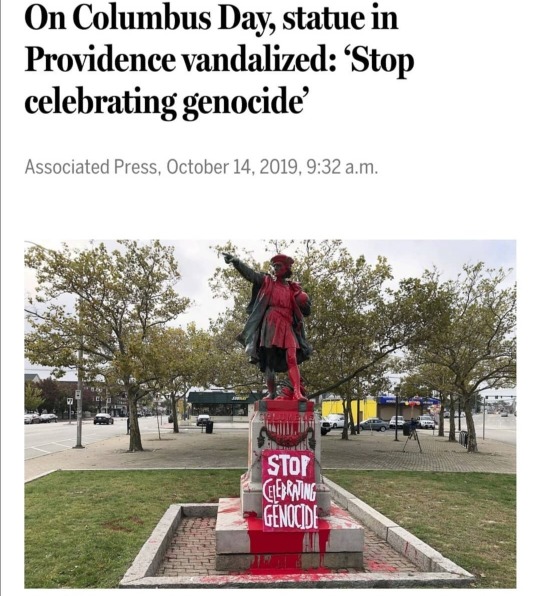
“Cancel culture” is nothing new, so why are we acting like it is? Those in power have written their own version of history as they’d like it to be remembered for ages. That “winners write history” is simply another way of saying that selective erasure (or canceling) of inconvenient truths is built into the fabric of documenting history.
What’s new is that now we’re looking backward to “uncancel” some of the important stories not widely shared about groups of people who have more power today than they’ve had in the past to record their truths for a broader audience.
An exemple is how has been washed, cleaned and packed up, the figure of Christopher Columbus in history books and mainstream european culture.
Some facts that you must know about Christopher Columbus:
- Christopher Columbus didn't discover America as a continent, and wasn't aslo the first European to visit American coasts: half a millennium before Columbus “discovered” America, Viking's feet may have been the first European ones to ever have touched North American soil. The expedition’s leader was Leif Eriksson (variations of his last name include Erickson, Ericson, Erikson, Ericsson and Eiriksson), son of Erik the Red, who founded the first European settlement of Greenland after being expelled from Iceland around A.D. 985 for killing a neighbor. (Erik the Red’s father, himself, had been banished from Norway for committing manslaughter.)
But Christopher Columbus was remarkably the first who came with the intention of a great military conquer.
- He didn't discover that the Earth is spherical: this knowledge was still accepted in the Middle Age and by the Christian doctrine.
Knowledge of the sphericity of the Earth survived into the medieval corpus of knowledge by direct transmission of the texts of Greek antiquity (Aristotle), and via authors such as Isidore of Seville and Beda Venerabilis.
Though the earliest written mention of a spherical Earth comes from ancient Greek sources, there is no account of how the sphericity of the Earth was discovered.
A recent study of medieval concepts of the sphericity of the Earth noted that since the eighth century, no cosmographer worthy of note has called into question the sphericity of the Earth.
Some examples are the papers of Pope Silvester II, who was awer of the knowledge of ancient greek philosophers and also of the researches of Muslim mathematicians. Also Saint Hildegard portrayed the Earth as a sphere in her Liber Divinorum Operum; Giovanni Sarabosco, an Italian astronomist wrote a paper (Tractatus de Spahaera) based on the knowledge of Ptolemy about the sphericity of the Earth; Honorius of Autun, a theologist very popular also in lay community,in his Elucidarium, a survey of Christian beliefs wrote about the sphericity of the Earth. His works was translated frequently into other languages.
Another proof that this knowledge was diffused also in the low folk and not only among the intellectuals of the Church, can be found in some of Berthold von Regensburg homelies in which he explained that the earth is spherical.
A practical demonstration of Earth's sphericity was achieved by Ferdinand Magellan and Juan Sebastián Elcano's expedition's circumnavigation (1519-1522).
- Christopher Columbus was the first European to have the idea to enslave native Americans and force them to work in colonizer's encomiendas. According to Cuneo, Columbus ordered 1,500 men and women seized, letting 400 go and condemning 500 to be sent to Spain, and another 600 to be enslaved by Spanish men remaining on the island. About 200 of the 500 sent to Spain died on the voyage, and were thrown by the Spanish into the Atlantic. (Bergreen, 196-197)
Those left behind were forced to search for gold in mines and work on plantations. Within 60 years after Columbus landed, only a few hundred of what may have been 250,000 Taino were left on their island.
- If you think that Christopher Columbus was loved and admired by people of his age, you are wrong: he gave land to the settlers and permitted the enslavement of the Taino people to work it. Complaints for his violence against Caribs and Taino Indians, but mostly for his cruelty against Spanish settler, trickled back to Spain, and eventually the monarchs sent a commissioner to investigate. Shocked by conditions at the colony, the commissioner arrested Columbus and his brothers and sent them back to Spain for trial. The brothers were released by the king and queen, but Columbus was removed from his position as governor of Hispaniola.
- Christopher Columbus was the fist European to commit a genocide: 56 years after Columbus's first voyage, only 500 out of 300,000 Indians remained on Hispaniola.
Population figures from 500 years ago are necessarily imprecise, but Bergreen estimates that there were about 300,000 inhabitants of Hispaniola in 1492. Between 1494 and 1496, 100,000 died, half due to mass suicide. In 1508, the population was down to 60,000. By 1548, it was estimated to be only 500.
Some important facts about slavery, Catholic Church and the famous Monarchs of Spain, Isabel of Castile and her husband Ferdinand of Aragon:
In 1492, Kingdom of Castile and Aragon had a disperate need of money: King Ferdinand and his wife Qeen Isabel used a lot of money in their wars against Portogual and their Conquer of the Emirate of Granada, that was an indipendente Muslim state at the age. They were deeply in debt, also with jews pawloaner, who at the age, were the only allowed to borrow money (Christian doctrine, by the way, didn't allow it), so they wrote the infamous Alhambra Decree with witch all jews were forced to left Spain and their properties passed in the Monarchs' hands.
I red some people associated the Dum Diversas with Columbus, but it has nothing to concern with "discovery" of the "new world": Dum Diversas is a papal bull issued on 18 June 1452 by Pope Nicholas V. It authorized Afonso V of Portugal to conquer Saracens and pagans and consign them to "perpetual servitude". It was referred to the muslim population of North Africa and also to the Turkish territories in Europe.
By the way, the Catholic Chruch condamed slavery in various occasion: in 1537 pope Paul III condemned "unjust" enslavement of non-Christians in Sublimus Dei. In 1686 the Holy Office limited the bull by decreeing that Africans enslaved by unjust wars should be freed. Eugene IV and Paul III did not hesitate to condemn the forced servitude of Blacks and Indians, in Sicut Dudum (1435) and in Sublimis Deus (1537). Their teaching was continued by Gregory XIV in 1591 and by Urban VIII in 1639. Except those formal condemn of slavery, the Church keep an ambiguous sentiment: the condamn was absolute, but most of the government of their age were built on slavery and keep allow their people to profit on slavery, for the reason that "indigenous" people were not Christians, they didn't have a soul, so they were like animals. The Holy See was unable to stop the trade, despite their good intentions.
The pontifical teaching was continued by the response of the Holy Office on March 20, 1686, under Innocent XI, and by the encyclical of Benedict XIV, Immensa Pastorum, on December 20, 1741. This work was followed by the efforts of Pius VII at the Congress of Vienna in 1815 to have the victors over Napoleon outlaw slavery. The 1839 Constitution In Supremo by Gregory XVI continued the antislavery teaching of his predecessors, and was in the same manner not accepted by many of those bishops, priests and laity for whom it was written.
#us history#american history#history#christopher columbus#columbus day#indigenous peoples day#indigenous peoples of the americas#indigenous people's day: bay area led the change#indigenous people&039;s day#kingdom of spain#colonial history#colonialism#vavuskapakage#cancel culture#slavery#genocide#crimes against humanity#leif erickson day#leif erikson
23 notes
·
View notes